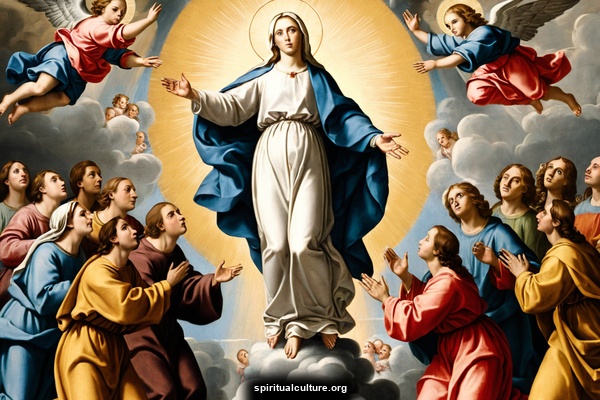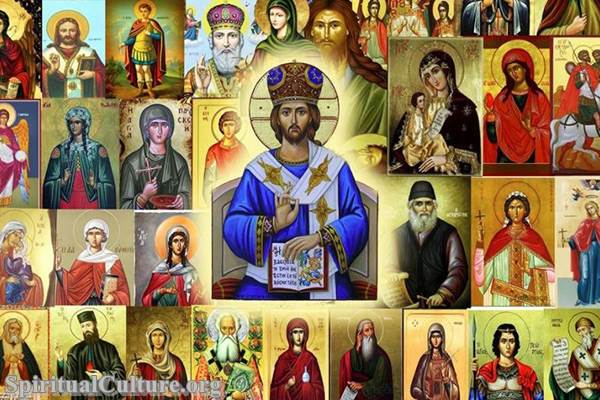The Assumption of Mary stands as one of the most cherished and significant doctrines in Christian theology, celebrated across denominations and cultures for centuries. This deeply revered belief holds that Mary, the Mother of Jesus, was taken up into heaven in both body and soul at the end of her earthly life. It is a doctrine steeped in history, biblical tradition, theological reflection, and vibrant cultural practices, reflecting Mary’s unparalleled role in salvation history.
In this extensive article, we will explore the Assumption of Mary in unparalleled depth. We will delve into its biblical roots, historical development, theological significance, global celebrations, and how it continues to inspire faith and devotion in the modern world. By the end, you will gain a profound understanding of why this event holds a central place in Christian devotion and doctrine.
What Does the Assumption of Mary Mean?
The Assumption of Mary, also known as the “Dormition” in Eastern Christian traditions, is the belief that Mary, the Mother of Jesus, was assumed body and soul into heavenly glory at the conclusion of her earthly life. This event signifies the culmination of Mary’s unique role as the Mother of God and her perfect cooperation with God’s salvific plan.

Unlike the general resurrection of the dead, which is awaited by all humanity, Mary’s assumption is a singular grace granted to her as a result of her Immaculate Conception, divine motherhood, and her life of perfect fidelity to God’s will. Her Assumption is both a foretaste of the resurrection promised to all believers and an affirmation of her unique place in God’s divine plan.
The Historical Development of the Assumption of Mary
The doctrine of the Assumption of Mary was formally defined as dogma by the Catholic Church in 1950, but its roots stretch back to the earliest days of Christianity. Its development reflects centuries of theological reflection, popular devotion, and the gradual recognition of Mary’s exalted role in salvation history.
Early Christian Beliefs and Apocryphal Texts
While the New Testament does not explicitly mention the Assumption, early Christians venerated Mary with profound devotion. By the 4th and 5th centuries, apocryphal writings such as the Transitus Mariae (The Passing of Mary) began to circulate, describing miraculous accounts of Mary’s death, burial, and assumption into heaven. These texts, while not part of the biblical canon, reveal the widespread belief among early Christians in Mary’s special destiny.
The Dormition of Mary, as it was often called in the Eastern Church, became a focus of liturgical and theological reflection. Eastern Christians emphasized that Mary “fell asleep” rather than experienced corruption in death, reflecting her purity and unique status as the Theotokos (Mother of God).
Growth of Marian Theology in the Middle Ages
By the Middle Ages, belief in the Assumption of Mary became more deeply embedded in the Church’s theological framework. Prominent theologians such as St. John Damascene, St. Thomas Aquinas, and others articulated the theological rationale for Mary’s Assumption. They emphasized that her freedom from sin, as affirmed by the doctrine of the Immaculate Conception, made it fitting that her body would not experience decay.
The Feast of the Assumption was established during this period and widely celebrated in both the Eastern and Western Churches. This liturgical recognition reflected the universal acceptance of Mary’s Assumption as an essential aspect of Christian faith.
Papal Definition in 1950: Munificentissimus Deus
On November 1, 1950, Pope Pius XII officially defined the Assumption of Mary as dogma in his apostolic constitution Munificentissimus Deus. He proclaimed:
“The Immaculate Mother of God, the ever Virgin Mary, having completed the course of her earthly life, was assumed body and soul into heavenly glory.”
This declaration did not create a new belief but solemnly affirmed a truth that had been deeply held and celebrated for centuries. The dogmatic definition was based on scripture, tradition, and the sensus fidelium (sense of the faithful) throughout the Church’s history.
Biblical Foundations of the Assumption of Mary
While the Bible does not explicitly recount the Assumption, the doctrine is deeply rooted in biblical themes, typology, and theology. Scriptural references to Mary’s unique role and destiny provide a foundation for understanding her Assumption.
Genesis 3:15 – Mary as the New Eve
The Protoevangelium in Genesis 3:15 refers to the enmity between the serpent and the woman and her offspring. This passage foreshadows Mary’s role in salvation history and her ultimate victory over sin and death. Her Assumption is seen as the culmination of this victory.
Luke 1:28 – “Hail, Full of Grace”
The angel Gabriel’s greeting to Mary during the Annunciation highlights her immaculate nature, free from sin. The phrase “full of grace” underscores her special status, which aligns with the belief that her body would not undergo corruption.
Revelation 12 – The Woman Clothed with the Sun
The vision of the woman in Revelation 12, crowned with twelve stars and clothed with the sun, is often interpreted as a symbol of Mary. This imagery reflects her exaltation in heaven, consistent with the doctrine of her Assumption.
Typology: The Ark of the Covenant
In the Old Testament, the Ark of the Covenant symbolized God’s presence and was treated with reverence. Mary, as the new Ark of the Covenant, carried the Word of God in her womb. Her Assumption reflects her purity and sacred role, much like the Ark’s exalted status.
Theological Significance of the Assumption of Mary
The Assumption of Mary is not merely a historical or devotional event; it holds profound theological significance for Christians, illuminating key aspects of salvation and the destiny of humanity.
A Foretaste of the Resurrection
Mary’s Assumption anticipates the resurrection of the body promised to all believers. It reminds Christians of the hope of eternal life and the glorification that awaits those who remain faithful to God.
Mary as the New Eve
Mary’s Assumption underscores her role as the New Eve. Just as Eve’s disobedience led to death, Mary’s obedience and Assumption highlight the victory of grace over sin and death.
Connection to the Immaculate Conception
The doctrine of the Immaculate Conception asserts that Mary was conceived without original sin. Her Assumption is a natural consequence of this grace, as her sinless body would not experience corruption.
Mary’s Role as Mediatrix and Advocate
The Assumption enhances Mary’s role as a powerful intercessor and advocate for humanity. From her exalted place in heaven, she continues to guide and pray for the faithful.
The Assumption of Mary in Christian Art and Literature
Throughout history, the Assumption of Mary has inspired countless works of art, literature, and music. Artists and writers have sought to capture the beauty, mystery, and spiritual significance of this event.
Iconography of the Assumption
In Christian art, the Assumption is often depicted with Mary ascending to heaven, surrounded by angels. Famous works include Titian’s Assumption of the Virgin and Murillo’s The Assumption of the Virgin. These masterpieces reflect the joy and glory of Mary’s heavenly exaltation.
Hymns and Liturgical Texts
The Feast of the Assumption is celebrated with special hymns and prayers in both Eastern and Western traditions. The Byzantine hymn “Dormition of the Mother of God” and the Catholic prayer “Queen Assumed into Heaven” express devotion and theological insights.
Celebrations of the Assumption of Mary Around the World
The Feast of the Assumption of Mary on August 15 is a major celebration in the Christian liturgical calendar, observed with diverse customs and traditions worldwide.
Europe
- Italy: Known as Ferragosto, the Assumption is both a religious and public holiday. Cities hold processions, fireworks, and feasts in honor of Mary.
- France: The Assumption is a national holiday, celebrated with pilgrimages, especially to Marian shrines like Lourdes.
Asia
- India: The Assumption coincides with Independence Day on August 15. Churches hold special services, and communities celebrate with festive meals.
- Philippines: Marian processions and novenas mark this solemnity, reflecting the nation’s deep devotion to Mary.
Americas
- Mexico: Vibrant processions and celebrations honor Mary’s Assumption, blending Catholic traditions with local culture.
- United States: While not a public holiday, the Assumption is a holy day of obligation, observed with Masses and community gatherings.
Modern Reflections on the Assumption of Mary
In today’s world, the Assumption of Mary continues to inspire hope and faith. It serves as a reminder of God’s promise of eternal life and the dignity of the human body. Mary’s Assumption calls believers to strive for holiness and trust in God’s providence.
Conclusion
The Assumption of Mary is a profound mystery that unites biblical tradition, theological insight, and popular devotion. It reflects Mary’s unique role in salvation history and offers hope to all believers in the promise of resurrection and eternal glory.
As we honor Mary’s Assumption each year, may we draw closer to her and be inspired by her example of faith, obedience, and love. Through her Assumption, Mary reminds us of our ultimate destiny in the kingdom of God, where we, too, may share in the joy of heavenly glory.

